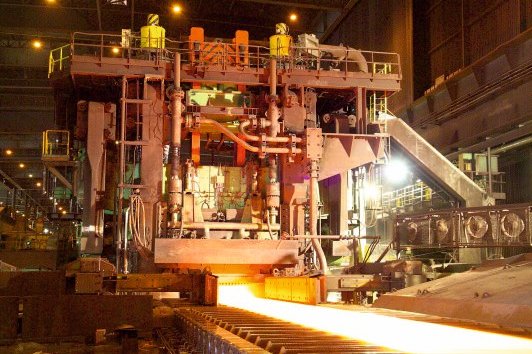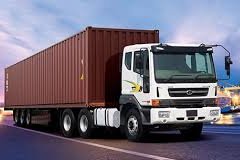|
|
STANDARD VALUE PROFILES
PRODUCTS
THE SVP FOR PRODUCTS TAKES INTO ACCOUNT ALL THE LIFECYCLE
|
The Standard Value Profile of a PRODUCT
This is essentially the STATE or balance sheet of the PRODUCT at a specific point in its life cycle ... a result derived from the accumulation of processes through the supply chain, and a computation to reflect the ongoing use of the product and the evential post use waste chain.
Key characteristics
The key characteristics of a PRODUCT are:
... The money price
... The money cost
... The value to the buyer
... The impacts on social capital up to this point in the product life cycle
... The impacts on natural capital up to this point in the product life cycle
... The impacts on social capital as the product is used going forward
... The impacts on natural capital as the product is used going forward
... The impacts on social captial as the product is traded or discarded post use
... The impacts on natural capital as the product is traded or discarded post use
|
The MONEY PRICE of a PRODUCT
Conventional economics has paid a lot of attention to the way price behaves. It is a foundational aspect of classical economics going back to Adam Smith and the basic ideas of a market economy. There are some markets where supply and demand works in the ways described by Adam Smith, but mostly in the modern world, the price is determined by analysis where the winner is usually the party with the most relevant information. At retail, the winner is mostly the seller who will be optimizing the price for maximum profit. The buyer often has no choice.
There is a substantial amount of data about prices. Not all of the data are accurate, because (in my own personal business experience) the data are gamed in order to achieve some sort of competitive advantage, and the systems to catch this sort of gaming are non-existent or inadequate.
|
The MONEY COST of a PRODUCT
The seller in most cases knows the money cost of a product being sold. The profit on a unit sale is the unit price less the unit cost. The profit for the organization is the unit profit times the quantity sold ... so price is determined by some thinking about the behavior of price relative to volume. In more sophisticated business environments, the behavior of cost is also taken into consideration because its variability will also impact the results.
TPB Note: In my early corporate career I paid a lot of attention to the behavior of cost and the behavior of price because in even the simpler business situations there were interesting variabilities which could be used to optimize profit performance. Most important, more did not always result in bigger profit, as for example when a factory was at or near its capacity, or when overtime costs had to be incurred in order to get the higher sales volume, and many other examples.
There is very little publicly accessible information about costs. Within a well managed corporate organization there is substantial information about costs and the behavior of costs. Sometimes this information is well understood and is meaningful, but in other cases there is a massive amount of data, and almost no useful information accessible from these data.
TPB observation: Early in my career I practiced 'management by walking around' keeping my eyes and ears open. In much of my career I was responsible for the cost accounting, but in order for the data within the cost accounting system to make any sense, there was a need to put it in perspective. A human being can see things that are not obvious from merely looking at data ... especially when the data collection is not addressing all of the issues. While this experience predates AI (artificial intelligence) most AI systems cannot handle the problem of missing data inputs especially when they are substantial and important. In many cases, in 5 minutes of walking around, I was able to solve problems that weeks of data analysis could not! This does not mean that the data are a waste of time and money, merely that they are only part of an effective management system
|
The VALUE of the PRODUCT to the buyer
There are no widely accepted or used numbers that reflect the value to the buyer. Theoretical economic ideas would suggest that a buyer will not buy something unless its 'value' is more than the price, and empirical behavioral evidence suggests that this is true.
TPB Observation: One of the reasons why a market based healthcare system can be abused (as in the United States) is that the 'value' of many medical procedures, especially in the case of serious illness and near death situations, is essentially the value of life itself ... and thus it is possible for the price for the procedure to be astronomical even when the cost of the procedure is quite modest! This issue is carefully hidden from plain sight by the for profit medical establishment!
|
|
Impacts up to this point in the product life cycle
|
Impact on on social capital
Without accountability, there is a 'race to the bottom' in all of the issues related to degradation of social capital. Low money costs and high profits are not optimized when impacts on social capital thoughout the supply chain are taken into consideration.
Worker Pay
Where the money cost is low, it is commonplace for the social cost to be high. One of the main ways that costs are reduced is to reduce the cost of payroll by making people work harder and longer for less pay and in less than decent working conditions and with little or no benefits.
Companies report profits, but they don't report how cost of sales has been kept low by treating workers in substandard ways.
Worse, the conventional way in which companies do their reporting (under GAAP, for example), mens that unacceptable social impact is hidden when it occurs in the supply chain outside the main reporting envelope of the corporate entity.
Workplace safety and health
Europe and North America has made great progress in the last few decades in improving workplace safety and health. The gap between these standards and those in other parts of the world are very large, and conveniently ignored in most conventional reporting of corporate performance and information about specific products.
Environmental Health
Many industrial processes degrade the environment in a variety of ways including water pollution and air pollution including toxic particulates. Many of these pollutants have a meaningful impact on environmental health which degrades social capital
Taxation
Many products are gamed to maiximize profitability by arranging (mostly in a legal fashion) to pay a minimum of taxes ... which has a very negative impact on social conditions where corporate entities have a lot of money and liquidity while most governments have far too little money resources for the services they need to provide.
Pro-good expenditures
Usually tiny in relation to the sales and profits, and ofter more a part of corporate marketing than a meaningful contribution to the improvement of social capital
Impact on on natural capital
Many industrial processes deplete natural capital as well as degrading natural capital in a variety of ways.
Mining produces important raw materials, but in the process depletes mineral resources and in many cases does a variety of other negative things including general degradation of the land, the water resources, and where there is local primary processing of the ores, terrible air pollution and environmental destruction.
(TPB Note: I am reminded of visits to Sudbury, Ontario, Canada, and old mining locations in the West of the USA in 1960
Impact on economic capital
|
|
Impacts as the product is used or consumed
|
Impact on social capital
PRODUCTS are bought and consumed in order to satisfy basic needs, and in order to sustain a decent quality of life and standard of living.
There are products that are 'need to have' and those that are 'want to have'
Products have a very important IMPACT on quality of life ... but numbering of this dimension of product value is weak.
Food and beverages. Some of these products are essential and have a very positive impact on health and wellness, others not so much, and even detrimental to good health. Many jurisdictions require labelling that gives certain information about nutrition, but such data are not linked directly to a numbering system for the impact on health.
Household furnishing People live with these products for a long time and there is increasing concern that the impact of many modern materials are not be adequately understood and there are many microtoxins in these materials that have damaging effects on people, especially young people who are in close contact with these materials for long periods of time.
Impacts on natural capital
The use of some products has important impact on natural capital, for example, the use of automobiles which require petrol / gas to operate and pollute the atmosphere in the process. The use of electricity is another example, where the production of electricity is doing huge damage to the environment especially where coal is the fuel used in the generating stations.
Impact on economic capital
|
|
Impacts as the product is traded or discarded post use
|
Impacts on social capital
There was a time when a significant amount of economic activity was associated with the repair of products of all types in order to extend their useful life. In much of the modern economy, rather than repair, the product is junked and a new product purchased. This consumption centric profit model is good for the economic sector, but less good for the social sector where a local repair business sector has almost totally disappeared.
Impacts on natural capital
The post use waste that has been accumulating on land and in the seas since the beginning of the modern economy, and especially in the last fifty years represents a huge degradation of natural capital, but is completely ignored in the computation of profits in the corporate enterprise. Numbering the impact of this post use detritus and incorporating it in the STANDARD VALUE PROFILE for a product will show something very different from the simple money profile of cost, price and value.
If product costs included some computation of the discounted net present cost of cleaning up all this mess, then better decisions ould be made about the single use throw-away products that dominate so much of the modern economy.
Impact on economic capital
|
|
PRODUCTS
|
|
PRODUCTS IMPACT PEOPLE AND ORGANIZATIONS AND NATURE
|
|
.
|
|
NEEDED FOR A DECENT QUALITY OF LIFE
|
Food - Vegetables

|
Food - Meat

|
Housing

|
Clothes

|
Mobility

|
Recreation

|
|
More consumption correlates to a better quality of life up to a certain level. Beyond that level more consumption may well have negative consequences, as for example too much food may result in obesity and diabetes or worse.
|
|
.
|
|
PRODUCTS START WITH NATURE AND HAVE A LONG LIFE CYCLE
|
NATURE

|
SEA

|
STEEL

|
EATING

|
WASTE

|
RECYCLING

|
NATURE

|
ROAD

|
REFINING

|
CONSUMING

|
LANDFILL

|
RECYCLING

|
EXTRACTION

|
RAIL

|
POLLUTION

|
DRIVING

|
FLOODS

|
NO WASTE

|
|
Products enable consumption that improves quality of life.
The production of products is a critical economic activity and source of profit for companies.
Production and products are only sustainable if they do not degrade the environment. Most modern industrial process are catastrophically unsustainable.
Smarter processes are needed together with smarter products, smarter consumers and systems to enable a circular economic model.
|
|
NATURE AND NATURAL SYSTEMS ARE FOUNDATIONAL
|
SUN
 NATURE
NATURE

|
NATURE
 BIODIVERSITY
BIODIVERSITY

|
Everything starts with nature ... but the importance of nature is ignored in most of economics, business management and politics. Natural ecosystems make clean water and air, maintain the productivity of soil, stabilize the climate and so much more.
Energy from the sun provides the energy for all sorts of natural production, as well as agrticulture for food production
There are complex networks that link the lifecycles of animals (including fish) and plants and are essential for life to go on season after season.
|
|
ECONOMIC ORGANIZATIONS PRODUCE AN ABUNDANCE OF GOODS
|
FARMING
 MINING
MINING
 STEEL
STEEL
 SEA
SEA

|
ENERGY
 RAIL
RAIL
 REFINING
REFINING
 ROAD
ROAD

|
The scale and complexity of the modern global economy is difficult to comprehend. It has been enabled since the start of the industrial revolution by impressive improvements in technology and this has accelerated over the years.
Customers have very little knowledge about the complete life cycles of the goods and services they buy and use. They know about price, and the messages associated with the product and the brand, but not much more.
Most companies optimize for profit and to generate wealth. Some companies know about the social and environmental impacts ... good and bad ... associated with the supply chains for what they produce and sell, but this information is closely held to the extent that it is known because almost all production is unsustainable into the future.
The flow of goods and services at the present level of economic activity is dangerously unsustainable, and will become more so as countries like India and China become more affluent and consumption increases. It is estimated that if everyone on planet earth had the lifestyle associated with the USA, it would require between 7 and 10 planets to be sustainable.
|
|
THE CONSUMPTION OF PRODUCTS IS CENTRAL TO QUALITY OF LIFE
|
EATING
 MOBILITY
MOBILITY
 HEALTH
HEALTH

|
CONSUMING
 RELAXATION
RELAXATION
 EDUCATION
EDUCATION

|
In a world of shortage, more is better ... and for most of history this has been the reality, but less so in modern times where productivity enables an abundance of material goods and services. The limiting factor is no longer production but the ability of nature to sustain such production without catastrophic degradation.
Quality of life improves when there is an abundance of goods and services from which to choose ... however too much results in negative impacts like obesity and diabetis.
For companies, more production and more sales results in more profits while at the same time more corporate responsibility results in more costs and less profits. Advertising is mainly about getting more sales, no matter the misinformation.
It is time for better metrics!
|
|
WASTE, INDUSTRIAL DETRITUS AND ENVIRONMENTAL DEGRADATION
|
AIR POLLUTION
 WATER USE
WATER USE
 LANDFILL
LANDFILL
 FLOODS
FLOODS

|
GHGs
 POLLUTION
POLLUTION
 PLASTIC
PLASTIC
 HURRICANES
HURRICANES

|
The modern economy produces a massive amount of waste. There is waste at every stage of the produce life cycle, and the costs of this waste are ignored in conventional financial management accounting.
Industry has a history of doing the minimum to reduce air pollution both as regards human health and the impact on the environment.
Agriculture and industry are using more water than the natural replenishment, and there are massive flows of polluted water into most major watersheds
Industry has also embraced the use of plastic ... including single use plastic ... without doing much about the way the plastic pollutes both land and seas and kills wildlife.
In addition industry has had little interest in ensuring that important ecosystems remain viable, both as regards biodiversity and also climate stability. Many scientists now consider that the climate situation has morphed into a climate crisis.
|

|
|
|
|

